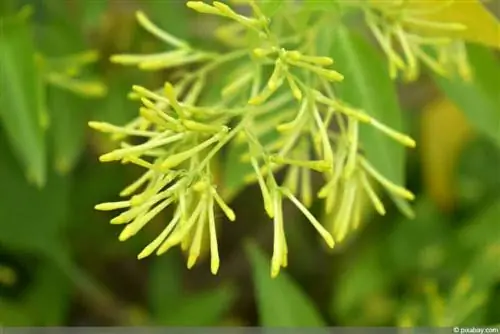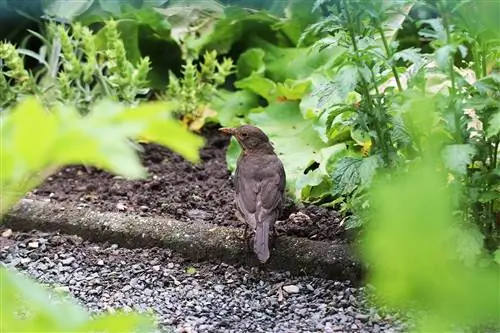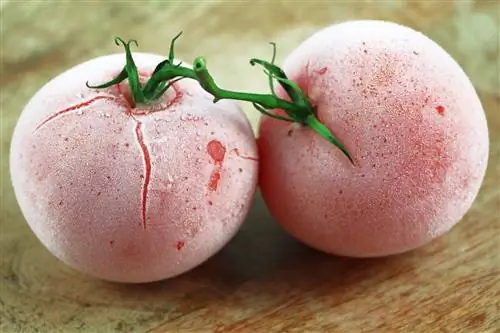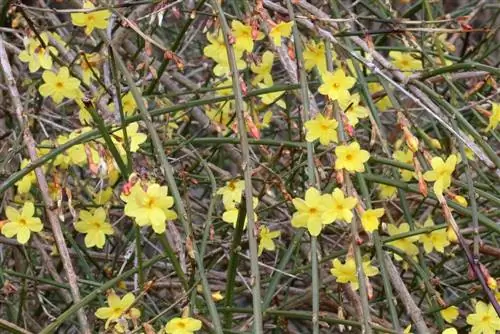- Author admin [email protected].
- Public 2023-12-17 03:39.
- Last modified 2025-06-01 06:48.
Cestrum nocturnum, the botanical name of night jasmine, originally comes from the tropics. So it's clear that he likes it warm and wouldn't survive a winter outdoors. In any case, it is usually found as a potted plant in a winter garden, which is only allowed on the terrace in summer. Whether indoors or outdoors - it’s all about proper care.
Location
As with almost all other plants, the right location also plays a major role for night jasmine. It is one of the most important requirements for the hammer bush, as it is also called, to grow and thrive. Problems that could arise with it can often be traced back to the fact that the location is simply not right. As a tropical plant, Cestrum nocturnum likes it warm and bright. A sunny, light spot, ideally in a winter garden, is almost mandatory. If necessary, the plant also copes reasonably well in partial shade. It is essential to ensure that the location does not experience sub-zero temperatures. In addition, the shrub should be reliably protected from excessive drafts.
Planting substrate
As already mentioned, night jasmine is usually cultivated as a container plant in our latitudes. That's why there are now a whole range of breeds in specialist shops that have been perfectly tailored to this. What they all have in common, however, are the conditions they place on the soil or planting substrate. The following applies: The plants are not particularly demanding when it comes to soil. Conventional potting soil is usually completely sufficient for them. However, you should definitely make sure that it is acidic to neutral. Specifically, this means that the pH value of the soil should be in the range of 5.7 to 7.4. A more alkaline plant substrate, however, must be avoided at all costs. It would cause considerable difficulties for Cestrum nocturnum.
Planting or transplanting
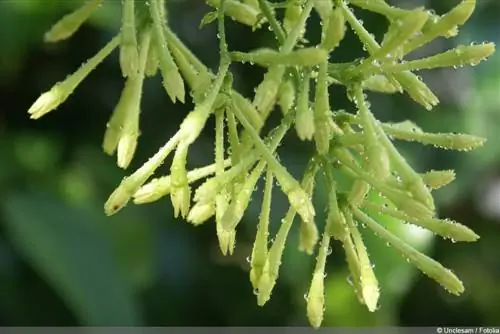
Normally you will buy the night jasmine as a young plant from a gardening store. It is then already planted in a pot whose size is completely sufficient for the first time. However, as soon as the pot becomes too small, it must be transplanted. The best time for this is always spring. It is important that the new planter is large enough. Under no circumstances should it restrict the root ball, but should give it enough room to develop. As a rule of thumb, the distance between the ball and the wall of the pot or container should be approximately half the growth width of the shrub. After planting, it must be watered well immediately - but in such a way that no waterlogging can form. Liquid fertilizer can also be administered at this time.
Pouring
As is usual with plants from the tropics, night jasmine also requires a relatively large amount of water. Regular watering is therefore particularly important. However, everything should be done to ensure that no waterlogging occurs. The soil should always be moist, but not wet. Excess water must therefore be able to drain away easily or be poured off. Waterlogging poses a great danger to the roots of the plant, as a fungal infection can easily develop there. Something else is important in connection with watering: the water for irrigation must not contain lime. Rainwater that has been caught and collected in a rain barrel in the garden is ideal. Tap water that is too calcareous can cause the soil to become alkaline.
Fertilize
In order for the magnificent flower umbels of Cestrum nocturnum to form, the shrub needs a lot of nutrients. There is therefore no way around generous amounts of fertilizer. In the growth phase from spring until well into summer you can be quite generous. It is best to use liquid green plant fertilizer, which is best poured into the irrigation water once a month. Under certain circumstances, the additional use of a seasonal fertilizer can also make sense - for example if the shrub is clearly lagging behind in growth. If you don't want to use liquid fertilizer, you can also use fertilizer sticks.
Cut
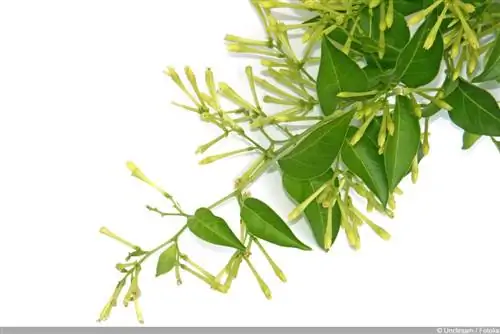
One of the special features of night jasmine is that it only produces flowers on the young branches. If you want to have a rich display of flowers, you can't avoid annual pruning. The best time for this is spring, when budding has just begun. You don't have to be squeamish when cutting or cutting back. Cestrum nocturnum can easily tolerate being cut back by up to a third. However, it is important that you have the desired shape of the shrub in mind and orientate yourself on that. As a tool, a sharp, clean pruner is sufficient for the cut.
Tip:
Pinching, i.e. the targeted cutting off of shoot tips, is also recommended. It stimulates the formation of side shoots and flower buds.
Wintering
It cannot be mentioned often enough: Cestrum nocturnum is a tropical plant. She is definitely not prepared for cold European winters. Not only is the plant not winter-proof, but it can also be damaged at low temperatures above zero. So it's a good idea to ensure adequate protection from the cold in late autumn. In most cases this means that the potted plant is brought into the house from the terrace or balcony at the latest. It's time to overwinter the night jasmine - and this can be done in three ways:
In the winter garden
Cestrum nocturnum does not necessarily require hibernation. In its countries of origin, the perennial bloomer simply grows all year round. The necessary conditions can of course be simulated in a heated winter garden here during the winter. So if you have a winter garden, you don't have to worry too much about overwintering your night jasmine. If you don't have a winter garden, you should think about using the overwintering service for your plants that many garden centers offer.
In winter quarters
You can, however, allow the night jasmine to rest during the winter months. He should then be placed in a bright room where the temperature is around 15 degrees Celsius. The plant needs to be watered regularly during this time, but requires relatively little water. Fertilization can be completely avoided.
In the dark
The amount of light is often a problem in winter - it is simply not enough for many plants. That's why they immediately go into a kind of deep sleep and hibernate in complete darkness. Of course, this is also possible with night jasmine at temperatures between ten and 15 degrees Celsius. However, this is also the variant that he has the worst time with. It will lose most, if not all, of its leaves. Ultimately, overwintering in the dark means a lot of stress for the plant, which can subsequently inhibit growth later in the spring.
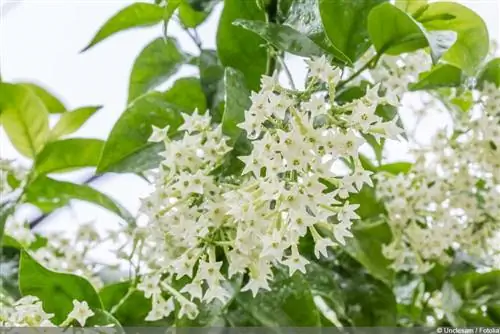
No matter which wintering option you choose, it is always important to be aware of the importance of light and warmth for Cestrum nocturnum. In general, it can be said: the more light and warmth the night jasmine gets during the winter months, the more leaves the originally evergreen plant retains. And that also means that it will sprout again in the spring with enough strength and the necessary energy. In this way, it is largely spared from pests and diseases. Correct overwintering plays a central role in the well-being and woe of the plant.

